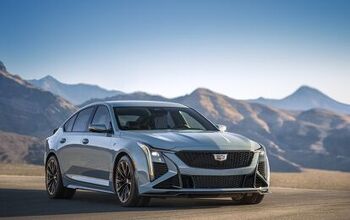Formula 1 Claws Its Way Back to Roadgoing Relevancy

The complaint most often tossed at Formula 1 is that despite being the (alleged) pinnacle of motorsports, its relevancy to road cars has disappeared.
That same feeling is what brought us to the current formula of tiny 1.6-liter turbocharged six-cylinder engines, all coupled to a complex hybrid system. Since that move, the racing series has focused more on engine development that in almost any era before, and with that comes a breakthrough in the way we look at thermal efficiency.
Even with current technology, internal combustion engines are still wholly inefficient. We’ve come a long way, but the average thermal efficiency rating still stands at about 25 percent. This means three-quarters of the energy produced by combustion is lost as heat rather than power.
It comes down (mostly) to how fuel is burned in the combustion chamber. If you could produce a more even burn in the chamber, you would be able to have massive gains in terms of efficiency.
This is where we get to Formula 1. During the renewed drive to provide teams with the best power units possible, Mercedes, Ferrari, Renault, and Honda have all been scrambling to find new solutions to the waste heat problem. From the way that brakes harvest heat under braking, to the trick turbocharger that sends heat energy to the battery system, the new formula is all about capturing energy that was previously wasted.
When Mercedes started coming out on top in almost every race in the 2014 season, it was clear they had a technical advantage the others missed. The new invention is called turbulent jet ignition, which boosts the efficiency of an F1 engine to 47 percent — a figure once thought impossible.
In this engine, the tried-and-true spark plug system is scrapped in favor of a TJI chamber. Here, 97 percent of the fuel is injected into the cylinder when the piston 60 degrees from the top-dead-center position, with remaining three percent dumped in a small pre-chamber that does have a spark plug. Once ignited, the pre-chamber’s contents become a hot pressure jet that ignites the rest of the fuel-air mixture.
Using this system allows F1 teams to meet their efficiency targets, using tiny amounts of fuel to create amazing power gains. Technology like this is why engine manufacturers are continually drawn back to F1, hoping for a tech breakthrough to deliver back to our lowly road cars.
[Source: ArtsTechnica, F1Technical]

Latest Car Reviews
Read moreLatest Product Reviews
Read moreRecent Comments
- Slavuta We need millions of migrants to work on our farms (Pelosi said) - this is ok when it comes to feed Pelosi
- Slavuta "that were believed to use forced labor" - the keyword here is "believed". I believe that this is biggest BS and hoax that has been going around. In US people rot in jail sells while in China, Russia, Ukraine and Scandinavian countries (these I know) there are labor programs. People work while in jail and make $$. Yes, they don't make top $$ but when they come out, they have $$ to start new life. This is not applicable for all crimes, but those prisoners who are "safe" enough to live in general barrack and not in individual cell are gladly participating. One famous such example was Russian billionaire Khodorkovskiy who learned several practical trades while in jail.
- 1995 SC In the realm of bad things that can happen to a 10th Gen Thunderbird, the subject car of this article got off easy. This was a kit back in the day and a suprising number still pop up:
- 28-Cars-Later I'm not dead, I'm getting better.
- Jalop1991 GTI all the things--because the Germans do it better.But it'll never happen.Instead, this will turn into all trim options, like VW's "R-line" and Hyundai's "N-line". Lipstick on a pig.


































Comments
Join the conversation
Cool article because, even though I watch pretty much every F1 race I can, I have never heard of turbulent jet ignition before.
Arstechnica had a good rundown on the tech used here.